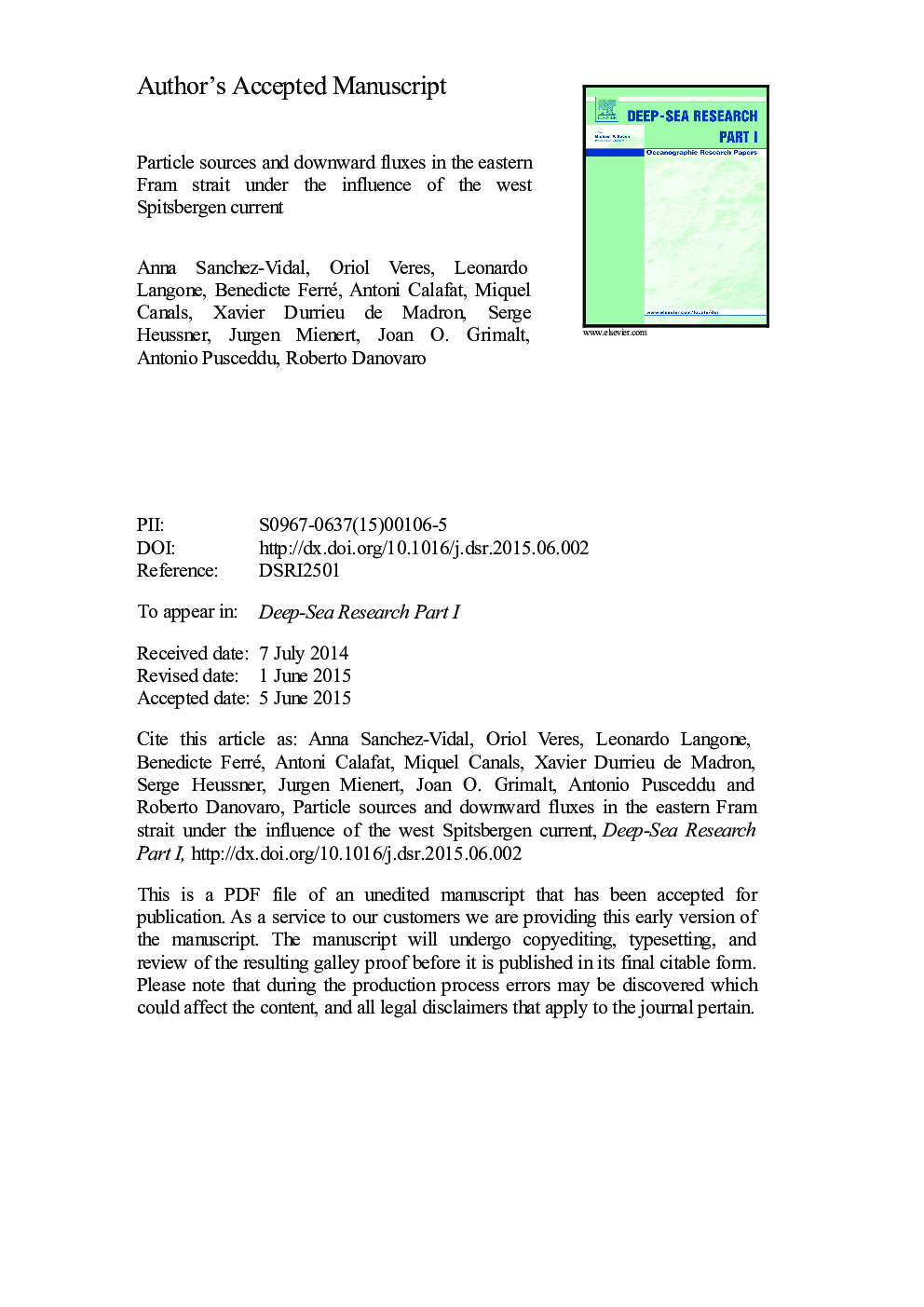| Article ID | Journal | Published Year | Pages | File Type |
|---|---|---|---|---|
| 6383480 | Deep Sea Research Part I: Oceanographic Research Papers | 2015 | 49 Pages |
Abstract
We found increased lithogenic fluxes (up to 9872 mg mâ2 dâ1) and coarsening grain size of settling particles in late winter-early spring. At the same time, intensifications of the northward flowing west Spitsbergen current (WSC) were recorded. The WSC was able to resuspend and transport northwards sediments that were deposited at the outlet of Storfjordrenna and on the upper slope west of Spitsbergen. The signal of recurrent winnowing of fine particles was also detected in the top layer of surface sediments. In addition, an increased arrival of sea ice transported ice rafted detritus (>414 detrital carbonate mineral grains larger than 1 mm per m2) from the southern Spitsbergen coast along with terrestrial organic matter was observed beyond 1000 m of water depth during winter months. Finally, the downward particle fluxes showed typical temporal variability of high latitudes, with high percentages of the biogenic compounds (opal, organic carbon and calcium carbonate) linked to the phytoplankton bloom in spring-summer. However, on an annual basis local planktonic production was a secondary source for the downward OC, since most of the OC was advected laterally by the WSC. Overall, these observations demonstrated the sensitivity of the downward flux of particles to environmental conditions such as hydrodynamics, sea ice rafting, and pelagic primary production. Future alteration of the patterns of natural drivers due to climate change is thus expected to cause major shifts in the downward flux of particles, including carbon, to the deep sea ecosystems.
Related Topics
Physical Sciences and Engineering
Earth and Planetary Sciences
Geology
Authors
Anna Sanchez-Vidal, Oriol Veres, Leonardo Langone, Benedicte Ferré, Antoni Calafat, Miquel Canals, Xavier Durrieu de Madron, Serge Heussner, Jurgen Mienert, Joan O. Grimalt, Antonio Pusceddu, Roberto Danovaro,
